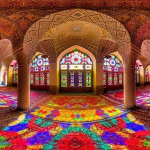Interested in visiting Bhutan? Here’s what you need to know before you go. This 2025 guide covers updated visa rules, reduced Sustainable Development Fees, travel insurance requirements, and what to budget for your trip. Discover why Bhutan remains one of the world’s most rewarding and responsible travel destinations.
Table of Contents
1. Introduction – A Journey to the Land of Happiness
Known as the “Happiest Country in the World,” Bhutan is famous for its stunning Himalayan landscapes and rich cultural heritage. With simplified visa procedures, increased flight options, and a 50% reduction in the Sustainable Development Fee (SDF) to USD 100 per night—effective from September 1, 2023, until August 31, 2027—visiting this mystical kingdom is now more accessible than ever. Whether you’re drawn by cliffside monasteries or vibrant festivals, Bhutan promises a deeply rewarding and immersive travel experience.
2. Visa & Entry Requirements: What You Need to Know Before Visiting Bhutan
Who Needs a Visa?
All foreign nationals — except citizens of India, Bangladesh, and the Maldives — require a visa to enter Bhutan.
All other foreign visitors must obtain a visa in advance.
Booking Requirements: Travel Must Be Pre-Arranged
In accordance with Bhutan’s “High Value, Low Volume” tourism policy, all international travelers are required to book their trip through a licensed Bhutanese tour operator or their authorized international partner. Independent travel is not permitted.
Young Pioneer Tours (YPT), in partnership with an accredited local operator, provides fully guided, pre-arranged tours. Once your booking is confirmed, YPT will handle:
- Visa application
- Route and trekking permits (if needed)
- All accommodation, transport, and guides
Upon approval, a visa authorization letter will be emailed to you. You must present this letter at flight check-in. The official visa will be stamped into your passport upon arrival in Bhutan. This system ensures a seamless travel experience while contributing directly to Bhutan’s sustainable development.
Passport Validity
Your passport must be valid for at least six months beyond your arrival date in Bhutan.
Fees Payable by All Tourists
- Visa fee: USD 40 (non-refundable)
Sustainable Development Fee (SDF):- Adults: USD 100 per night
- Children aged 6–11: USD 50 per night
- Children under 5: Free
The SDF directly supports Bhutan’s healthcare, education, cultural preservation, and environmental conservation.
Additional Travel Permits
- Route Permit: Required for travel outside Thimphu and Paro
- Trekking Permit: Mandatory for trekking or mountaineering activities
3. Sustainable Development Fee (SDF) Policy and Budgeting
What Is SDF?
The Sustainable Development Fee (SDF), often referred to as Bhutan’s “tourism tax,” was introduced in 1974 to regulate tourism, limit environmental impact, and preserve the kingdom’s unique culture and heritage. It embodies Bhutan’s model of responsible travel, aligning with the country’s philosophy of Gross National Happiness.
Current SDF Rates (Valid Through August 31, 2027)
| Category | SDF Per Night |
| International Adults | USD 100 |
| Children (6–11) | USD 50 |
| Children under 5 | Free |
| Indian Citizens | ~USD 16.50 (Nu 1,200) |
💡 Note: The USD 40 visa fee is separate and mandatory for all international visitors (excluding Indian, Bangladeshi, and Maldivian nationals).
The SDF does not cover other travel expenses such as airfare, hotels, meals, transport, or guide services.
Where Does SDF Go?
SDF is not just a fee—it is Bhutan’s model of responsible tourism. The funds are used to:
- Provide free healthcare and education
- Preserve cultural heritage and historic sites
- Support infrastructure and community development
- Protect Bhutan’s environment and maintain carbon-negative status
With over 70% forest cover and a strong sustainability ethic, Bhutan ensures that every visitor contributes to the preservation of its pristine ecosystem and cultural legacy. For the most accurate and up-to-date information on the Sustainable Development Fee (SDF), please visit the official Bhutan Tourism website.
Budgeting for a Trip to Bhutan
While Bhutan is not a low-cost destination, it offers unmatched value through its immersive cultural experiences and sustainable practices. Here’s a basic breakdown to help you budget:
Estimated Daily Travel Costs (USD per person):
| Category | Low-End | Mid-Range | Luxury |
| SDF | $100 | $100 | $100 |
| Accommodation | $30–50 | $60–150 | $250+ |
| Meals | $10–20 | $25–40 | $60+ |
| Local Transport & Guide | $20–40 | $40–80 | $100+ |
| Total (per day) | ~$160 | ~$225 | $500+ |
🎒 Budget Tip: Travel in groups to share transportation and guide costs.
Special Promotions & Discounts
- Long-stay offers: For example, “pay for 4 nights, get 3 free”
- Off-season promotions: Typically during summer (June–August) and winter (December–February)
- Regional discounts: Bhutan may offer special rates to select countries during promotional periods
4. Travel Insurance Requirement
All international travelers (except citizens of India, Bangladesh, and Maldives) must provide valid travel insurance covering the entire stay.
5. Final Thoughts
Bhutan’s unique tourism model may differ from other countries, but it offers unmatched authenticity, sustainability, and depth. With lowered SDF, streamlined visa applications, and new traveler incentives, Bhutan is more welcoming than ever—inviting you to explore a kingdom where happiness and harmony are national priorities.
Want to learn more about Bhutan?
Dive into our Ultimate Travel Guide – your one-stop resource for everything from visa rules and packing tips to Bhutanese cuisine, festivals, traditions, and spiritual landmarks. Explore culture, landscapes, and legends for a truly immersive and unforgettable Himalayan journey.
Are You Ready to Experience Bhutan with YPT?
Join us for a transformative journey through the Land of the Thunder Dragon—where ancient culture, breathtaking landscapes, and mindful adventure await. Discover our upcoming tours and take the first step toward your unforgettable Himalayan escape today.





